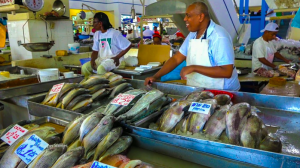Whether you’re in Panama City to visit or live here full-time, getting to know the place requires more than just the typical daily routine. Sure, you’ll have a great time no matter what’s on your schedule, but if you really want to connect with Panama City on a deeper level, you’ll have to get to know its culture. This means more than just getting a local bite to eat (though as you’ll see, that will be part of it), or having friends and colleagues who are Panamanian. It’s about digging into the fabric that makes the city great, learning about their history, embracing their present, and discovering what makes the culture run. Want to know where to start? Here’s how.
Get to know the basics of Panama City.
Panama City has had growth unlike any other comparable city in the region over the past ten or so years. Because of this, the city has experienced a lot of layered cultural shifts. Much of these shifts are economic, with many others coming from a bigger foreign labor force, more international investment, and a sort of globalization of the modern services sector. All of these are great, but can often keep people from learning more about the deep cultural roots of the city. To get to those roots, it’s best to start by exploring Panama’s oldest barrios.
El Chorillo:
Take a tour of one of Panama’s most iconic, if not controversial neighborhoods, El Chorillo. El Chorillo is a densely populated urban neighborhood at the southern corner of Panama City. It runs alongside Casco Viejo (the historic old city), and stretches from the bay to the base of Ancon Hill. Locals will tell you to be careful walking around here, so we recommend taking a tour. Local in PTY is a great option for this, and they take you on a cultural journey getting to meet locals, hear stories of the past, eat traditional street food, and even volunteer with kids.
Casco Viejo:
Although more upscale and tourist-centric than El Chorillo, Casco still has many deep cultural connections to Panama City that are worth checking out. You can see 1st hand the multi-million dollar public redevelopment projects that keep the colonial style and charm of the city well maintained. You can explore indigenous art galleries, iconic churches, and hear local street musicians in the parks and plazas. It is highly walkable, and has great local food options as well.
Take a Salsa Class in a Casino:
Yes, it sounds a bit different, but this is truly a Panama City classic. Salsa is king in Panama, and for decades, locals have dressed up with their partners (or solo, even) and headed to one of many local casinos that offer both salsa classes and “salsa nights.” Casinos are typically used because of their large space capability for entertainment (as well as lights/sound systems), and other entertainment amenities like food, games, and quick service bars. Don’t worry if you’re not a gambler, though. Many of these salsa practitioners simply go for the dancing and listening to live music. We recommend taking a class first, which are usually offered at casinos during the weekdays, and cost very little ($15-$20).
Eat Fresh Ceviche at the Mercado de Mariscos:
Just trying a local dish doesn’t quite immerse you into a culture. However, eating at this local market, smelling the smells, hearing the sounds, and chatting with some of Panama City’s unique characters certainly does. Simply put, there’s no place quite like the Mercado de Mariscos in Panama, and that’s why it’s the perfect place to indulge the senses, and feel like a true Panameno in the process. The market is at the end of the Cinta Costera, just before the entrance of Casco on the bay.
The ceviche is sold by about two-dozen vendors, all vying for your attention from the moment you walk near. It’s anywhere from $2.50-$8.00 depending on the size, with the cheapest cups holding enough food to satiate a mid-day appetite, or a pre-dinner app. You will hear loud salsa and “plena” music coming from many of the booths, see fisherman come in and out of the docks, and may strike up a conversation with an off-duty fisherman or taxi driver. It’s as unique of an experience as you can have in the city, and a part of the culture that’s unforgettable.
